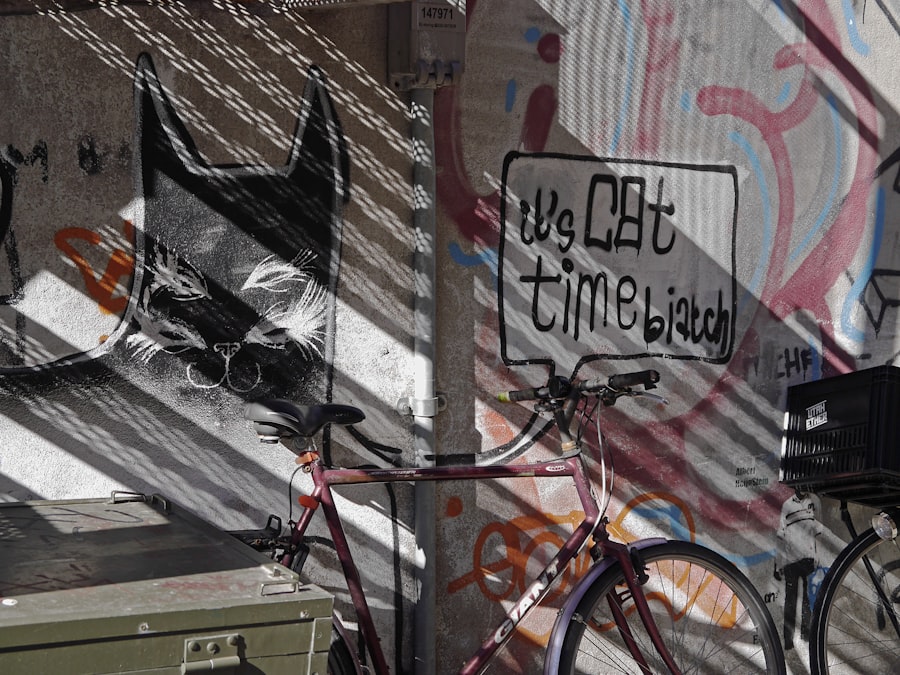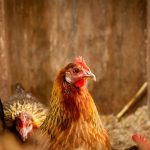Chickens are highly susceptible to heat stress due to their lack of sweat glands and reliance on panting for thermoregulation. When ambient temperatures exceed 85°F (29.4°C), chickens struggle to dissipate heat effectively, leading to various negative health and productivity impacts. These include decreased feed intake, reduced egg production, poor egg quality, and potential mortality in severe cases.
Heat stress also compromises the chickens’ immune systems, increasing their susceptibility to diseases and infections. Poultry farmers must understand the impact of heat on chickens to implement effective mitigation strategies and ensure flock well-being. Different chicken breeds exhibit varying levels of heat tolerance, with some, like the Leghorn, being more heat-resistant than others.
Understanding the specific needs and vulnerabilities of different breeds is essential for developing targeted heat management strategies. A comprehensive understanding of heat’s impact on chickens is crucial for implementing proactive measures to prevent heat stress and its associated negative consequences. This knowledge enables farmers to maintain optimal flock health, productivity, and welfare during periods of elevated temperatures.
Table of Contents
- 1 Providing adequate shade and shelter
- 2 Ensuring access to cool, fresh water
- 3 Using fans and misters to lower the temperature
- 4 Adjusting feeding schedules and types of feed
- 5 Monitoring signs of heat stress in chickens
- 6 Implementing additional measures for extreme heat conditions
- 7 FAQs
- 7.1 What are some signs that my chickens are overheated?
- 7.2 How can I keep my chickens cool in hot weather?
- 7.3 What are some ways to provide shade for my chickens?
- 7.4 How often should I change my chickens’ water in hot weather?
- 7.5 Are there specific breeds of chickens that are better suited for hot weather?
Key Takeaways
- Heat stress can have a significant impact on chickens, affecting their health and productivity.
- Providing adequate shade and shelter is crucial to protect chickens from the harmful effects of heat.
- Ensuring access to cool, fresh water at all times is essential for keeping chickens hydrated and cool.
- Using fans and misters can help lower the temperature in chicken coops and provide relief from heat stress.
- Adjusting feeding schedules and types of feed can help prevent heat stress and maintain the health of chickens.
Providing adequate shade and shelter
Creating a Comfortable Environment
One of the most fundamental strategies for mitigating the impact of heat on chickens is to provide adequate shade and shelter within the poultry housing environment. This can be achieved through natural shade from trees or artificial structures such as awnings or shade cloth. Ensuring that the chicken coop or run is well-ventilated and protected from direct sunlight during the hottest parts of the day is essential for creating a comfortable and safe environment for the birds.
Designing Poultry Housing for Heat Mitigation
Additionally, providing access to cool, shaded areas where chickens can rest and escape the heat is crucial for preventing heat stress. In addition to shade, it is important to consider the design and materials of the poultry housing itself. Using reflective roofing materials can help reduce the absorption of heat into the coop, while proper insulation can help maintain a more stable internal temperature.
Ventilation and Airflow
Furthermore, ensuring that the coop is well-ventilated with adequate airflow can help dissipate heat and prevent the buildup of hot air within the structure. By providing adequate shade and shelter, poultry farmers can create a more comfortable and thermally-regulated environment for their chickens, reducing the risk of heat stress and its associated negative impacts.
Ensuring access to cool, fresh water

Access to cool, fresh water is absolutely essential for preventing heat stress in chickens. During periods of high temperatures, chickens will consume more water to help regulate their body temperature through panting and evaporative cooling. Therefore, it is crucial to ensure that chickens have continuous access to clean, cool water throughout the day.
This may require increasing the number of water sources within the poultry housing environment and regularly monitoring and refilling them to prevent dehydration. In addition to providing ample water sources, it is important to consider the temperature of the water itself. During hot weather, water temperatures can rise significantly, making it less effective for cooling purposes.
To address this, poultry farmers can use various strategies to keep water cool, such as using insulated water containers or adding ice to the water. Additionally, providing access to shallow water baths or misting systems can offer chickens additional opportunities to cool down and alleviate heat stress. Overall, ensuring access to cool, fresh water is a critical component of heat management for chickens and should be a top priority for poultry farmers during periods of high temperatures.
Using fans and misters to lower the temperature
In addition to natural shade and shelter, using fans and misters can be an effective way to lower the temperature within the poultry housing environment and mitigate the impact of heat on chickens. Fans can help improve air circulation and reduce the buildup of hot air within the coop, creating a more comfortable and thermally-regulated space for the birds. Additionally, misting systems can be used to create a fine spray of water that evaporates quickly, helping to cool the surrounding air and provide relief from high temperatures.
When using fans and misters, it is important to consider their placement and operation to maximize their effectiveness. Fans should be positioned to provide even airflow throughout the coop without causing drafts or chilling the birds. Misters should be used sparingly to avoid creating excessively humid conditions that could exacerbate heat stress.
By strategically incorporating fans and misters into the poultry housing environment, poultry farmers can help lower the temperature and create a more comfortable and conducive space for their chickens during periods of extreme heat.
Adjusting feeding schedules and types of feed
During periods of high temperatures, it may be necessary to adjust feeding schedules and types of feed to help alleviate the impact of heat on chickens. Heat stress can reduce feed intake in chickens, leading to decreased nutrient intake and potential weight loss. To address this, poultry farmers can consider offering smaller, more frequent meals throughout the day to encourage consistent feed consumption.
Additionally, feeding during the cooler parts of the day, such as early morning or late evening, can help minimize the impact of heat on feed intake. Furthermore, adjusting the types of feed offered to chickens during hot weather can help support their nutritional needs and reduce the risk of heat stress. For example, incorporating feed additives such as electrolytes or vitamin supplements can help support hydration and overall health during periods of high temperatures.
Additionally, using feed with a lower protein content can reduce metabolic heat production in chickens, helping them cope with hot weather more effectively. By adjusting feeding schedules and types of feed, poultry farmers can help support the nutritional needs of their chickens during periods of extreme heat and minimize the negative impacts of heat stress on their flock.
Monitoring signs of heat stress in chickens

Recognizing the Signs of Heat Stress
Common signs of heat stress in chickens include panting, wing spreading, reduced activity, decreased feed intake, and reduced egg production. Additionally, chickens may exhibit signs of distress such as open-mouth breathing, lethargy, or seeking out cooler areas within the coop.
Environmental Factors Contributing to Heat Stress
By regularly observing the behavior and condition of their flock, poultry farmers can identify signs of heat stress and take proactive measures to address them. In addition to visual monitoring, it is important to pay attention to environmental indicators that may contribute to heat stress in chickens. This includes monitoring ambient temperature and humidity levels within the poultry housing environment, as well as assessing airflow and ventilation.
Proactive Measures to Mitigate Heat Stress
By staying vigilant and responsive to signs of heat stress in chickens, poultry farmers can take timely action to mitigate its effects and ensure the well-being of their flock during periods of high temperatures.
Implementing additional measures for extreme heat conditions
In extreme heat conditions, additional measures may be necessary to protect chickens from the negative impacts of heat stress. This can include implementing emergency cooling measures such as using portable fans or misters in outdoor areas where chickens are kept. Providing access to cool surfaces such as concrete or shaded areas with damp soil can also offer relief from high temperatures for chickens.
Furthermore, it may be necessary to adjust management practices during extreme heat conditions to minimize stress on the birds. This can include reducing handling or movement of chickens during the hottest parts of the day, as well as avoiding overcrowding within the coop or run. Additionally, providing supplemental electrolyte solutions in drinking water or offering frozen treats such as fruits or vegetables can help support hydration and provide additional cooling benefits for chickens during periods of extreme heat.
Overall, implementing additional measures for extreme heat conditions requires proactive planning and responsiveness from poultry farmers to ensure the well-being of their flock. By taking these steps, poultry farmers can help protect their chickens from the negative impacts of extreme heat and support their health and productivity even during challenging environmental conditions. In conclusion, understanding the impact of heat on chickens is essential for implementing effective strategies to mitigate its effects and ensure the well-being of poultry flocks.
By providing adequate shade and shelter, ensuring access to cool, fresh water, using fans and misters to lower the temperature, adjusting feeding schedules and types of feed, monitoring signs of heat stress in chickens, and implementing additional measures for extreme heat conditions, poultry farmers can help protect their flocks from the negative impacts of heat stress and support their health and productivity even during periods of high temperatures. With proactive planning and responsive management practices, poultry farmers can create a comfortable and thermally-regulated environment for their chickens, minimizing the risk of heat stress and its associated negative consequences.
If you’re looking for more tips on keeping your chickens comfortable in hot weather, you might want to check out this article on chicken coop interior ideas. It offers great suggestions for creating a cool and comfortable environment for your chickens during the summer months.
FAQs
What are some signs that my chickens are overheated?
Some signs that your chickens may be overheated include panting, holding their wings away from their bodies, reduced egg production, and lethargy.
How can I keep my chickens cool in hot weather?
You can keep your chickens cool in hot weather by providing plenty of shade, ensuring they have access to fresh, cool water at all times, using fans or misters in the coop, and offering frozen treats such as fruits and vegetables.
What are some ways to provide shade for my chickens?
You can provide shade for your chickens by using tarps or shade cloths to cover their coop and run, planting trees or shrubs to create natural shade, and providing structures such as awnings or umbrellas.
How often should I change my chickens’ water in hot weather?
In hot weather, it’s important to change your chickens’ water frequently to ensure it stays cool and fresh. Aim to change their water at least once or twice a day, or more often if it becomes warm or dirty.
Are there specific breeds of chickens that are better suited for hot weather?
Some chicken breeds are more heat-tolerant than others, such as the Leghorn, Rhode Island Red, and Sussex. These breeds are better equipped to handle hot weather and may require less intervention to keep them cool.
Meet Walter, the feathered-friend fanatic of Florida! Nestled in the sunshine state, Walter struts through life with his feathered companions, clucking his way to happiness. With a coop that’s fancier than a five-star hotel, he’s the Don Juan of the chicken world. When he’s not teaching his hens to do the cha-cha, you’ll find him in a heated debate with his prized rooster, Sir Clucks-a-Lot. Walter’s poultry passion is no yolk; he’s the sunny-side-up guy you never knew you needed in your flock of friends!







